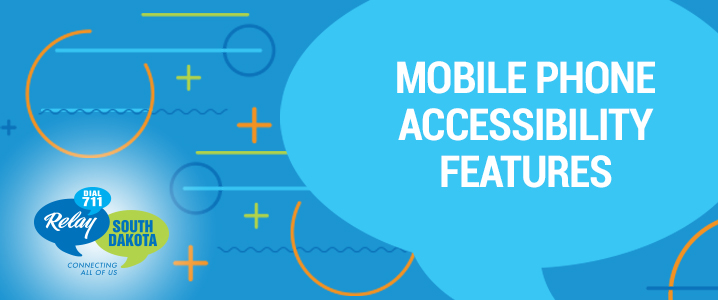
Mobile Phone Accessibility Features

Technology impacts communities in different ways. For the deaf and hard-of-hearing community, assistive technology has made large leaps in recent years. Everything from digital assistants to live captioning has helped people who are deaf or hard of hearing communicate. Ever since mobile devices and internet-based technologies have become essential parts of our daily lives, accessibility has been a must. With technology improving by the day, there might be some applications that you should be aware of that slip through the cracks.
Here are some of the accessibility features you might not know about on your mobile phone.
Apple
Sound Recognition is a brand-new technology on Apple devices. It listens for certain sounds and uses on-device intelligence to notify you when a specific sound is detected. Users will then receive a notification when a particular type of sound or alert is detected. This could be anything from a doorbell to the fire alarm.
Headphone Accommodations help users customize their audio experience to make the world sound as crisp as can be. The ability to amplify soft sounds and adjust frequencies allows you to personalize sound preferences to your liking.
If you’re not a headphone user, Live Listen can help you tune out noise and listen to what matters most. Live Listen is an assistive listening feature that helps users have better conversations in loud places. It uses the microphone in the user’s device to pick up what people are saying more clearly.
Android
For Android users, Live Transcript allows you to see instant captions of everyday conversations. It’s communication in the moment, whatever the moment. Live Transcript’s speech-recognition technology is impressive and can catch verbal nuances in real-time. There’s no more second-guessing the captions on your phone.
Live Caption lets users caption almost everything with a single tap of a button. Whether you have Wi-Fi, cell phone data or neither, Live Caption will automatically caption videos, podcasts, audio messages, and more!
Sound Amplifier has advanced sound functions. It can boost sounds, adjust volume and eliminate background noise. It improves the audio quality of Android devices when using headphones.
Video Chat
Today’s video chat technology has the ability to deliver video at very high frame rates. This allows for the capture of American Sign Language’s motion. Facial expressions, too, are important in ASL. They give a lot of context, emotion, and information. These high frame rates can easily showcase facial expressions and body language.
Apple’s FaceTime just got an accessibility upgrade with the release of iOS 14. In group calls, FaceTime now auto-detects if someone is using ASL and keeps that video front and center. FaceTime can be used on a bunch of Apple products, too, including iPhones, iPads, Macs and iPod touches. Video chat is better than ever before.
Almost everyone has access to smartphones and mobile devices these days. Technology provides the opportunity to increase independence and reduce isolation. Breaking down communication barriers is one of the things Relay South Dakota does best. Learn about more communication tools, in the Technology section of our blog.
If you don’t have access to a smartphone, there are alternative options available for deaf or hard-of-hearing individuals that help bridge communication that Relay South Dakota can provide.
Found in: Programs | Technology

